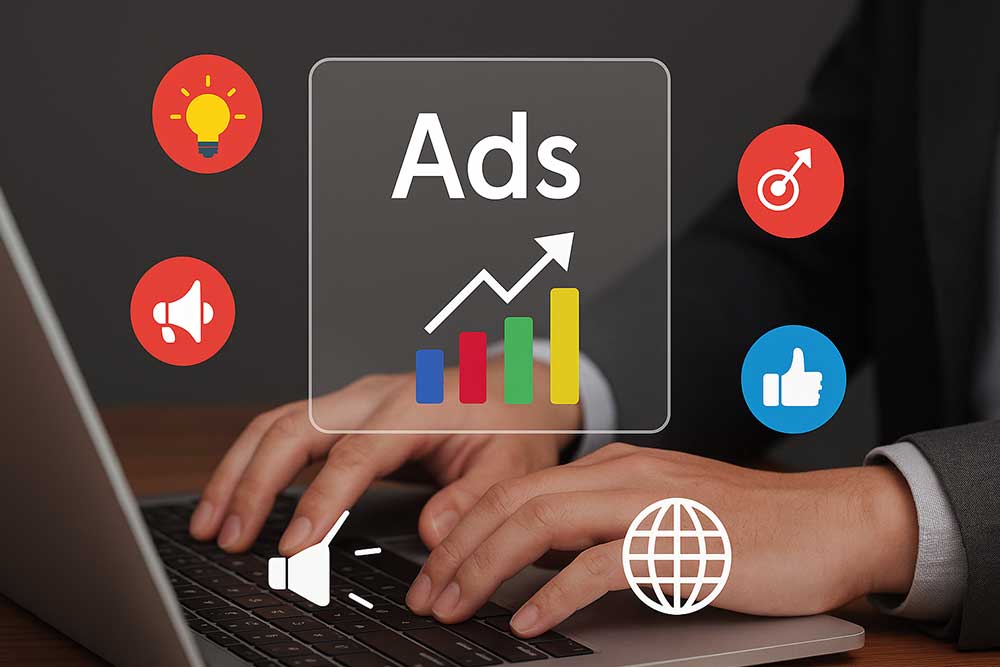
First-party data is information people share directly with your business through forms, checkouts, support, or loyalty programs. When connected to Google Ads, that data improves audience targeting, keeps measurement steady when cookies are limited, and helps budgets flow to the customers who matter most. This guide outlines the core Google features, a practical activation plan, and governance steps any team can follow.
What “first-party” means for Google Ads
Google surfaces several native features that accept customer information collected with consent and apply it to ads and reporting. The result is more precise targeting and stronger conversion data without relying on third-party trackers. Customer Match activates your lists across Search, Shopping, YouTube, Gmail, and Display, while Enhanced Conversions improves attribution by using hashed identifiers. GA4 audiences add event-based segments, and Consent Mode ensures tags reflect each user’s choices.
If you already partner with a Google Ads agency NYC team or manage accounts in-house, these features provide a shared language for planning and performance discussions. Customer lists, consent signals, and GA4 audiences become the common building blocks for strategy.
Core tools to put first-party data to work
- Customer Match: Upload email, phone, or mailing data your customers provided, and Google attempts a secure match to its users. You can target, exclude, or create similar audiences where available. Lists update over time, so treat them as living assets, not one-off files.
- Enhanced Conversions: When someone converts, your site can pass hashed identifiers, such as email, using SHA-256 before transfer. This improves match rates, helps Smart Bidding, and recovers conversions that tags might otherwise miss. Implementation works via the Google tag, Tag Manager, or the API.
- GA4 audiences linked to Google Ads: Build audiences from site and app events, then export them to Google Ads for targeting or observation. Typical examples include “added to cart but not purchased” or “visited pricing three times in 14 days.”
- Consent Mode: This framework communicates each visitor’s consent status to Google tags. When consent is granted, tags behave normally. When it is not, tags adjust behavior and support modeled reporting where allowed.
A practical activation plan
1) Collect with intent:
Review every touchpoint where you ask for data. Capture only fields you can apply in ads or measurement, and explain the value people get in return, such as faster checkout or member pricing. Link to a clear privacy notice and log consent consistently. Consent Mode depends on those signals.
2) Standardize and validate:
Normalize emails to lowercase, trim whitespace, and format phone numbers consistently before upload. Schedule automatic list refreshes from your CRM rather than manual files. Healthy inputs raise Customer Match rates and reduce wasted impressions.
3) Segment by intent and value:
Start with a few dependable buckets:
- High-value buyers for exclusives and upsell
- Recent purchasers for accessories or service plans
- Lapsed buyers for win-back
- Cart or lead abandoners for reminders
- Category browsers who showed repeated interest
Build these in GA4 and export to Google Ads, then mirror them with Customer Match where you have identifiers.
4) Pair inclusions with exclusions:
Exclude current customers from broad prospecting and reserve brand search for high-value segments. List-based exclusions are one of the simplest ways to cut CAC without sacrificing volume.
5) Upgrade conversion quality:
Turn on Enhanced Conversions for web or leads. For lead gen, use conversion adjustments to reflect qualified or won status so bidding focuses on pipeline, not just form fills. Validate using the Ads UI and troubleshooting guidelines.
6) Respect regional rules:
In the EEA and UK, Consent Mode v2 requirements mean your CMP must pass analytics_storage, ad_storage, ad_user_data, and ad_personalization settings accurately. Inaccurate signals can distort reporting.
7) Measure what matters:
Track new-customer share, marginal ROAS, and time to second purchase. GA4 audiences and Enhanced Conversions supply steadier signals, which improves data quality for Smart Bidding over time.
Bidding and creative that fit your audiences
- Prospecting built on real customers. Use your best buyers as the seed for expansion where available. Apply value rules to weigh high-margin categories or profitable locations.
- Lifecycle messaging. Show replenishment to lapsed buyers, accessories to recent purchasers, and simple value props to first-time prospects.
- Search precision. Add your lists in observation, raise bids for segments with strong conversion rates, and use negatives to shield keywords from low-value traffic.
- YouTube and Shorts. Serve short videos to cart abandoners, then cap frequency to limit overlap with Search.
These tactics work for national brands and local teams alike. For example, a boutique retailer running PPC for small business NJ can use a small top-buyer list to steer Performance Max, exclude recent purchasers from generic campaigns, and rely on Enhanced Conversions to protect reported revenue when cookies are sparse.
Also Read: How to Maximize Your Business ROI with Digital Ads with Blast Marketing Agency
Common pitfalls and easy wins
Avoid these mistakes: missing consent signals, stale lists, and audience sprawl that no one maintains. In many audits, the biggest issues are mislabeled cookies or tags firing at the wrong time, which leads to misleading metrics. A brief QA using Consent Mode checklists pays off quickly.
Deploy these quick wins this month:
- Enable Enhanced Conversions and confirm hashing is working. Check match rates weekly.
- Export three GA4 audiences tied to meaningful events and attach them to Search and Performance Max.
- Upload a VIP Customer Match list, exclude it from prospecting, and compare blended CAC before and after.
- Verify your CMP passes Consent Mode v2 parameters to Google Tag Manager in real time.
The takeaway
A durable first-party strategy is straightforward: collect data with consent, clean it, segment it by intent, connect it to Google Ads, and keep your measurement honest. Customer Match, GA4 audiences, Enhanced Conversions, and Consent Mode give you the pipes. Your process keeps those pipes flowing. With steady upkeep, you reach the right people, spend with confidence, and prove impact that stands up to scrutiny.
